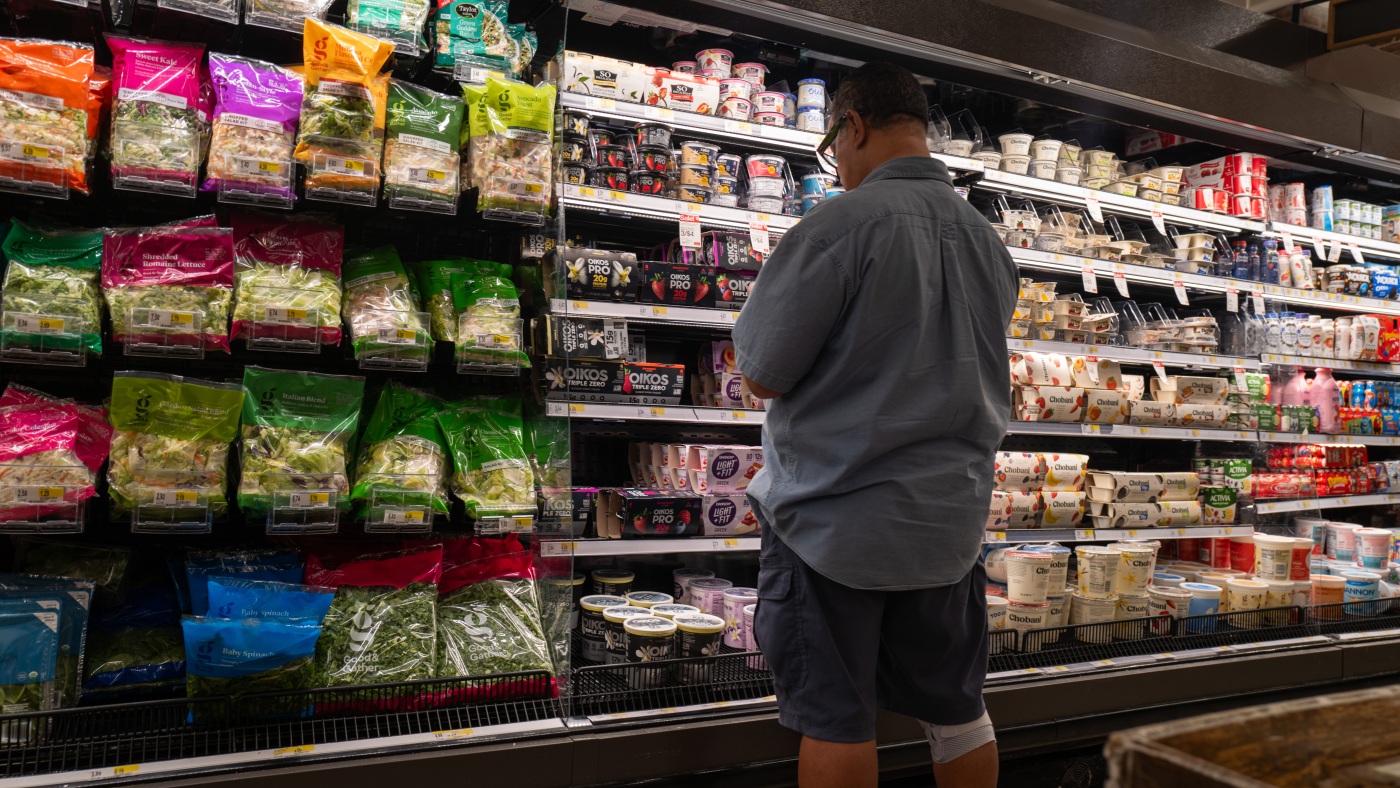Consumer prices rose 2.5% in August from a year ago, the smallest annual increase since early 2001. Grocery prices have largely leveled off after climbing sharply in the previous two years, but the cumulative increases continue to sting many consumers.
Spencer Platt/Getty Images North America
hide caption
toggle caption
Spencer Platt/Getty Images North America
Inflation fell to its lowest level in 3-and-a-half years in August, clearing the way for the Federal Reserve to start cutting interest rates next week.
Consumer prices in August were up 2.5% from a year ago, according to a report from the Labor Department Wednesday. That’s the smallest annual increase since February 2021.
Here are four things to know about the cost of living report.
Housing costs are still climbing, but gasoline is getting cheaper
Housing costs have been the biggest driver of inflation in the last year, rising 5.2%. Gasoline prices, on the other hand, have plunged more than 10%.
Overall, the price of goods has fallen nearly 2% in the last twelve months, led by a sharp drop in the price of used cars and trucks. The cost of services such as haircuts and car repair continues to climb, however.
Grocery prices have mostly leveled off, but they’re not falling
One of the places shoppers feel the sting of inflation most is at the supermarket. People buy groceries every week, so it’s a regular reminder that milk and eggs cost more than they used to. But after climbing sharply in 2022 and 2023, grocery prices have mostly leveled off. They rose less than 1% in the last twelve months and were unchanged between July and August.
Federal Reserve governor Chris Waller understands that’s little comfort for people who want to see lower prices at the supermarket.
“I don’t dismiss any of the pain and suffering people have from this,” Waller told an audience at Notre Dame last week. “I go to the grocery store myself. I’ll look at certain prices and say, ‘Hell no. I’m not buying that.'”
But Waller says it’s doubtful grocery prices will return to the levels of 2019 or 2020. Instead, he suggests, rising wages will gradually catch up to the higher prices, so shoppers can fill their carts again. Grocery prices have risen 25.5% since the beginning of the pandemic, according to the Labor Department, while average wages have risen 23.5%.
Inflation remains a potent political issue
Prices are now climbing at the slowest pace since President Biden’s second month in office, but many people remain frustrated by the cumulative price hikes over the last three years.
Both former President Trump and Vice President Harris highlighted the high cost of living in their debate Tuesday night.
“We have inflation like very few people have ever seen before — probably the worst in our nation’s history,” Trump claimed, exaggerating the pace of price increases, which peaked at 9.1% in 2022. “This has been a disaster for people, for the middle class but for every class.”
Trump offered little in the way of tangible solutions for inflation. Many economists have warned that his proposal to levy a 10% tariff on all imports and even higher taxes on imports from China would drive prices up, not down.
Harris also nodded to voters’ frustration with high prices, saying “the cost of housing is too expensive for far too many people.”
The Federal Reserve is ready to start cutting interest rates, slowly
The central bank has tried to curb inflation by pushing interest rates to their highest level in more than two decades, making it more expensive to get a car loan, finance a business or carry a balance on your credit card.
While inflation is still above the Fed’s target of 2%, it’s moving in that direction. So now the Fed is prepared to start cutting interest rates to avoid slowing the economy unnecessarily and putting people out of work.
“The upside risks to inflation have diminished and the downside risks to employment have increased,” Fed chairman Jerome Powell said last month. “The time has come for policy to adjust.”
Investors have been uncertain whether the Fed would start with a modest rate cut of a quarter percentage point or a more aggressive, half-point cut. Wednesday’s inflation report left markets anticipating a smaller cut, which disappointed some investors and prompted a sell-off in stocks. Details in the report showed somewhat stickier monthly inflation, which is seen as likely to make the Fed proceed cautiously.
